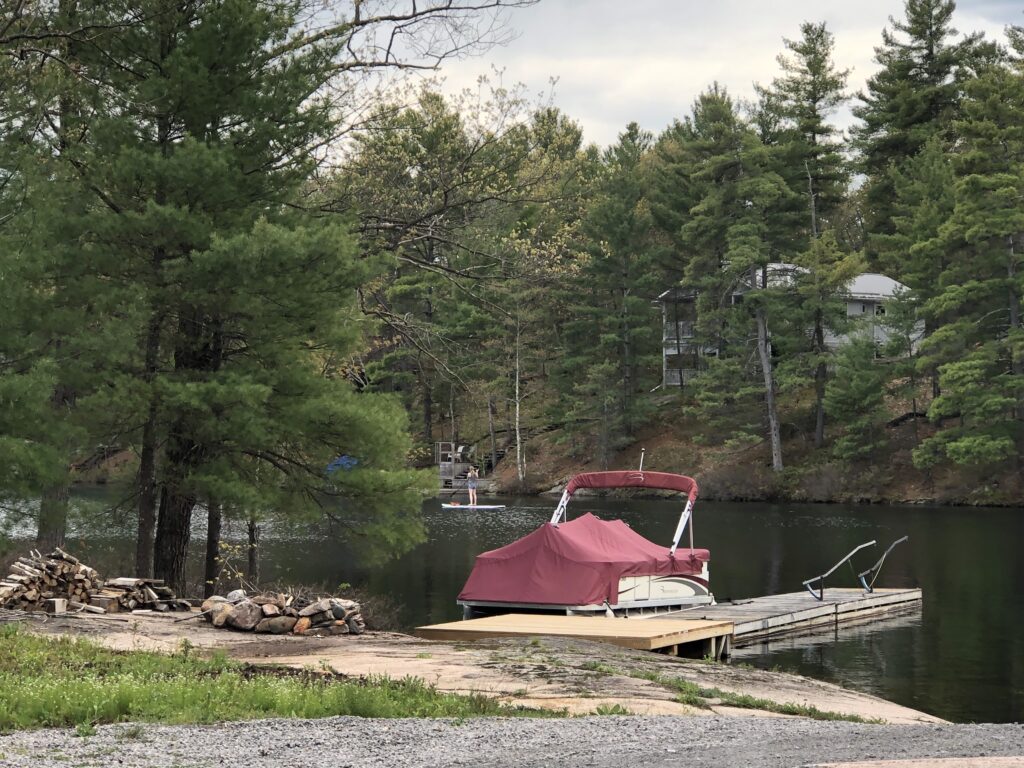
I’m often asked about different types of docks and what I think is the best dock for cottages in the Kawartha’s? Its a great question and one that deserves discussion. After all, your dock is your connection to the lake and can serve many purposes other than a place to tie up your boat. Whether it’s a sitting area for enjoying sunsets, a place for ladder to enable entry, or your first point of contact with your cottage each weekend (as is the case in water access cottages), a solid dock is a must.
There are two main categories of docks – Floating and Fixed. Within these categories, many variations but lets first understand these two very different types.
In this post, I’ll discuss Floating Docks (my personal favourite).
Floating docks benefit from moving up and down with fluctuating water levels, without the need to do mid-season adjustments as lake levels typically drop. They are always at the perfect height, ensuring your boat isn’t being damaged as it rubs against the underside of a fixed dock that hasn’t been adjusted with lake levels. They can be built using many different floatation types (called billets), some of which are ideal for Do-it-yourself construction. Depending upon the scenario at your cottage, they can be left in the lake for winter, often removed from position and floated into a bay to be out of the way from wind and possible ice damage. They do require a solid anchoring system which again, needs to be designed based on the situation at your cottage. I use large pails that I filled with concrete and put a galvanized eye in at the top. I have long chains with chain brackets affixed to the corners of my docks, which allow me to adjust chain length in seconds. Be mindful of wind and the impact of a large boat tied up during storms (A pontoon boat can serve as a giant sail!). In the Kawartha’s, many of the shallow, Canadian-shield lakes don’t see major wave action from storms, but it wind and weather need to be considered. You’ll also need a solid platform on shore to hinge your floating dock to. There are lots options for hinges also – typically cotter pins hold sections together, to enable easy separation . A hinged ramp allows for the dock to move with waves while ensuring a good connection to shore.
One tip – be sure to make your docks wide enough to allow for two people to pass while carrying coolers or luggage. I like a minimum of a 6′ wide dock which also makes it more stable.
Floating docks are considered to be ‘lake-friendly’, as they don’t disturb the lake bottom and provide shade for wildlife. Be sure to use approved floatation billets.
In the fall, I simply pull the pins on the hinges, remove the ramp and tow my dock to an adjacent bay where I tie it to shore for the winter. the process takes less than an hour and can easily be done by myself.
Personally, I’m a big fan of floating docks….